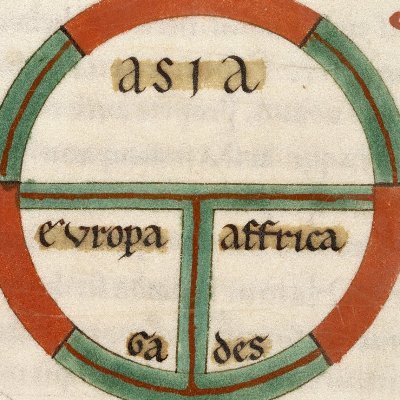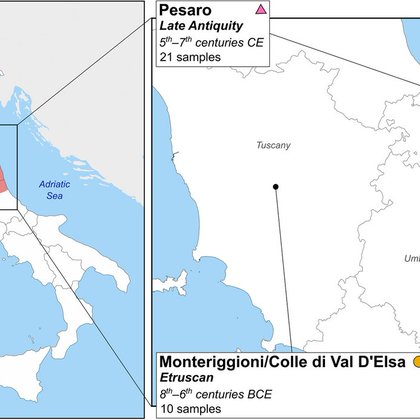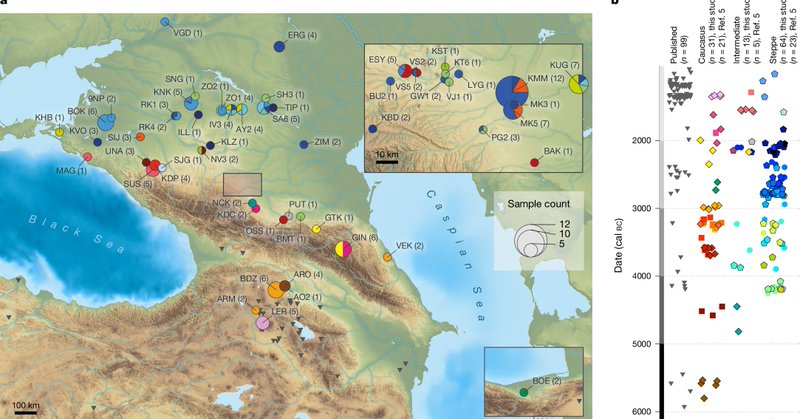
Hannah Moots 🏺🧬
@mootspoints
Followers
2K
Following
6K
Media
96
Statuses
1K
Find me on 🦋 - https://t.co/HGmEkA3NBK | Archaeology & Ancient DNA @CpgSthlm | Mobility in the Iron Age & Roman Mediterranean | Human-Envir. Interactions
Joined November 2010
This is absolutely not what we said. We showed that before the imperial expansion of Rome, central Italy was home to people from all over the Mediterranean. This may have been an important factor in the rise of Rome.
83
413
2K
RT @ezgimou: Excited to co-organize a session with @mootspoints at @TRAC_conference 2025!.🧬 Integrating Ancient DNA with Archaeological The….
0
6
0
RT @FlintDibble: Fantastic conversation with Dr Hannah Moots @mootspoints about her research into the genetics of ancient Rome, and the mi….
0
10
0
Had a great time speaking w/ Anthony Kaldellis about studying the people of ancient Rome using archaeogenetics and allied disciplines. At Isola Sacra, the necropolis for Rome’s primary port, genetic ancestry and mobility isotopes tell *very* different, but complementary, stories
The Genetic History of Rome, with Hannah Moots #Podcast.
3
9
69
For an overview of our results (and some of our other projects)
New episode of Tides of History is out today! It was truly a pleasure speaking with @Patrick_Wyman about what we can learn from ancient DNA about mobility in the Iron Age Mediterranean - from Carthage and the Phoenicians to the rise of Rome
0
0
3
This book - The Making of the Middle Sea - was a formative resource for our work on mobility in the Carthaginian and Etruscan Mediterranean. So it was truly a delightful surprise to see this summary of our work in the newly revised edition!
We sequenced 30 ancient genomes from four archaeological sites in the central Mediterranean - from Tunisia, central Italy and Sardinia - to study the increasingly interconnected nature of the populations of the Great Sea, particularly in terms of human mobility and interaction.
2
6
69
@Patrick_Wyman We also had a fun sidebar about mobility and migration, and how ancient DNA can leverage the extensive anthropological literature and terminology on the topic - as well as a discussion of some personal and familial histories!.
0
0
1
@Patrick_Wyman If this sounds interesting to you, check it out! And thanks so much for the wonderful conversation, Patrick, and for all your great work!.
1
0
1
New episode of Tides of History is out today! It was truly a pleasure speaking with @Patrick_Wyman about what we can learn from ancient DNA about mobility in the Iron Age Mediterranean - from Carthage and the Phoenicians to the rise of Rome
2
13
52
RT @euglenadat: aDNA of Italic Iron Age Picenes out on @GenomeBiology! 🎉. In this work, by @FraRavasini and co-led….
genomebiology.biomedcentral.com
Background The Italic Iron Age is characterized by the presence of various ethnic groups partially examined from a genomic perspective. To explore the evolution of Iron Age Italic populations and the...
0
24
0
RT @ezgimou: Size çok güzel bir pazar videosu bırakıyorum. Bu yaz Füsun Özer ile ortak öğrencimiz Arda Sevkar @ekoevoder yüksek lisans tez….
0
9
0
RT @H5P53: Curious about Denisovan introgressions? 🤔 @Linda_Ongaro & @emiliahsc's new review breaks down ❓ what we know, how we know it, an….
0
5
0
RT @brad_dan: Our new paper on the dynamic ancient genomic history of the aurochs is out in Nature. Well done to all, esp. Conor Rossi. Fre….
0
29
0









